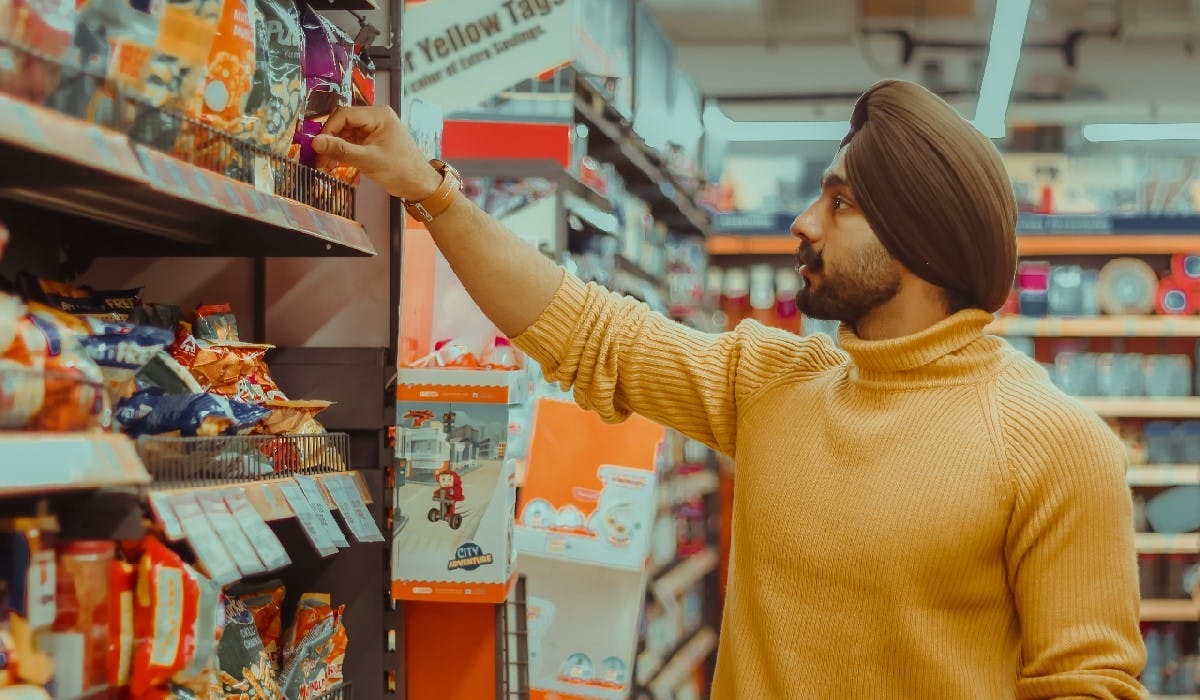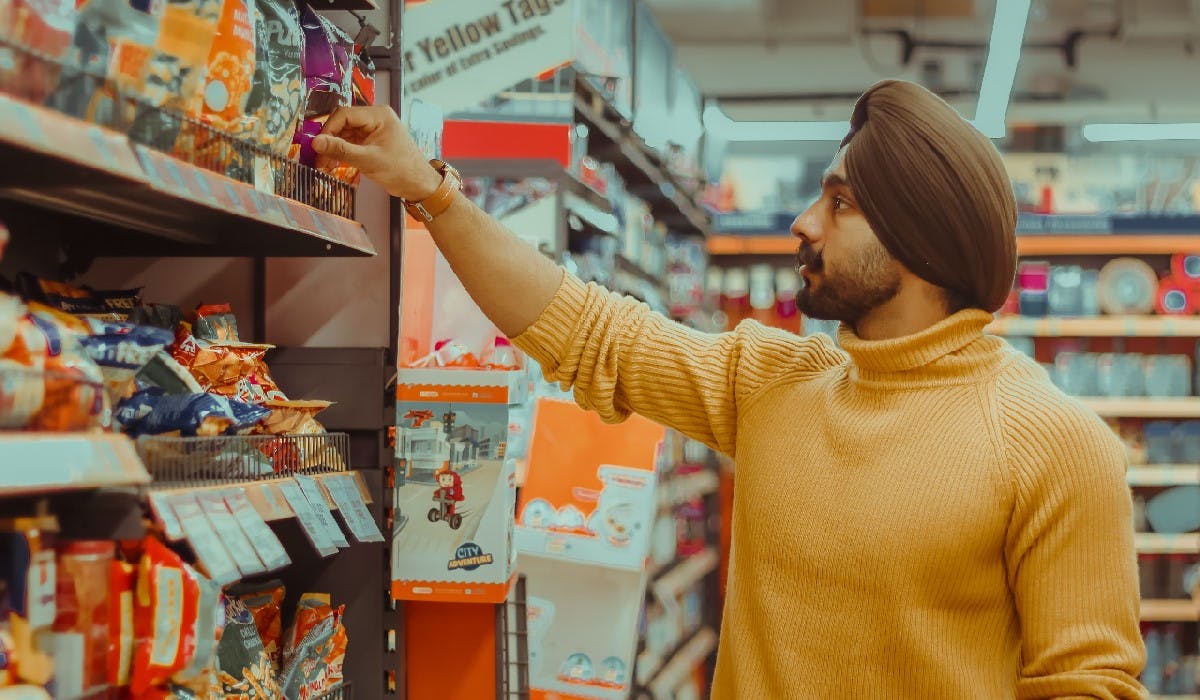
Supermarket own-brand products now account for over 50% of sales, but there remains plenty of room for brands to make their mark on consumers amid the cost-of-living crisis, analysts say.
By Niamh Carroll 13 Apr 2022Brands need to help consumers navigate the cost-of-living crisis to set themselves apart from private label goods, analysts advise, as supermarket own-brands begin to dominate shopping baskets.
According to recent research from Kantar, the proportion of consumer spend spent on private label goods is on the rise, while the proportion spent on brands is falling. While private label (or own-brand) sales are down in line with the wider market, their share of spend has now grown to 50.6%, up from 49.9% this time last year.
Recent figures from Nielsen IQ draw a similar conclusion, claiming the share of sales for private label products has risen from 52.4% to 53.2% compared to a year ago. Sales of branded FMCG products have declined -5.1%, whilst overall sales of private label products are down just -1.9%.
Alongside this trend, UK supermarkets have been increasingly investing in their own-brand ranges. Last month Asda announced it was launching Just Essentials by Asda, which it claims is the largest budget-friendly staples offer in the market. The grocer has invested £45m in developing the range.
M&S, which is best known for its premium own-brand offering, is also investing significantly in its value range, Remarksable. The retailer announced this week it would be bringing down the prices of the range, and has invested over £100million in its value position over the last three years
The really innovative FMCG brands are thinking about how they can help consumers navigate the cost-of-living crisis.
Elsewhere, value retailers Aldi and Lidl sell almost exclusively own-brand products, a tactic that has clearly proven popular with budget-conscious shoppers. According to data from Kantar over the 12-weeks to 20 March 2022, both discounters saw an increase of 3.6% in consumer spend, compared to the same period last year. This growth is higher than any other supermarket over the same period.
At the same time, the OBR has suggested the fallout from the war in Ukraine could push inflation to a 40-year high of 8.7% in the final three months of 2022. Retail Economics CEO Richard Lim says brands can expect a repeat of consumer behaviour seen during the periods of inflation that followed the 2008 financial crisis, which means people will cut back on branded FMCG products and look instead to cheaper own-brand and private labels.
Mark Field, director and founder of Prof. Consulting Group notes that the pandemic has meant that the brands consumers have been accustomed to haven’t always been on the shelves, whether that was due to supply chain issues or the panic buying seen at the start of the pandemic. This has contributed towards the shift to private labels, he suggests.
However, Ananda Roy, international senior vice president, strategic growth insights at FMCG data and analytics firm IRI, is cautious about drawing direct comparisons between the current state of play and what happened post-2008.
The current crisis is “heavily influenced by supply side problems”, he notes, adding that many FMCG companies are “significantly constrained” in using price promotions to sell at this time.
Cost of living crisis: Where will consumers cut £12bn in spend?In any case, the current growth of private label goods compared to brands may be overstated in some cases, Roy argues. He says there was something of an “artificial” jump for FMCG brands during the pandemic, with sales boosted unusually high.
“With chaos and uncertainty around us, we were buying well-recognised brands,” he says. Now, as pandemic restrictions ease, FMCG brand sales are reverting to normal levels.
The opportunity for brands
Nevertheless, the increasing proportion of spend going towards private-label goods means a shrinking pool of spend for brands, which poses a significant challenge as the cost-of-living crisis peaks.Yet, rather than asking themselves how they can protect profits, brands should be “flipping” the equation and asking what they can do to help consumers, says Roy. Where brands can make savings, the emphasis should be on passing the value onto consumers.
“I would suggest the majority [of brands] are looking at mitigating losses. But the really innovative FMCG brands are thinking about how they can help consumers navigate the cost-of-living crisis,” Roy says.
Yet, it won’t necessarily be the cheapest products that win out during this time of inflation, Roy adds. While customers are looking to save money and find deals, they are still discerning about brand ethics and values.
Lire l’article complet sur : www.marketingweek.com



Leave A Comment